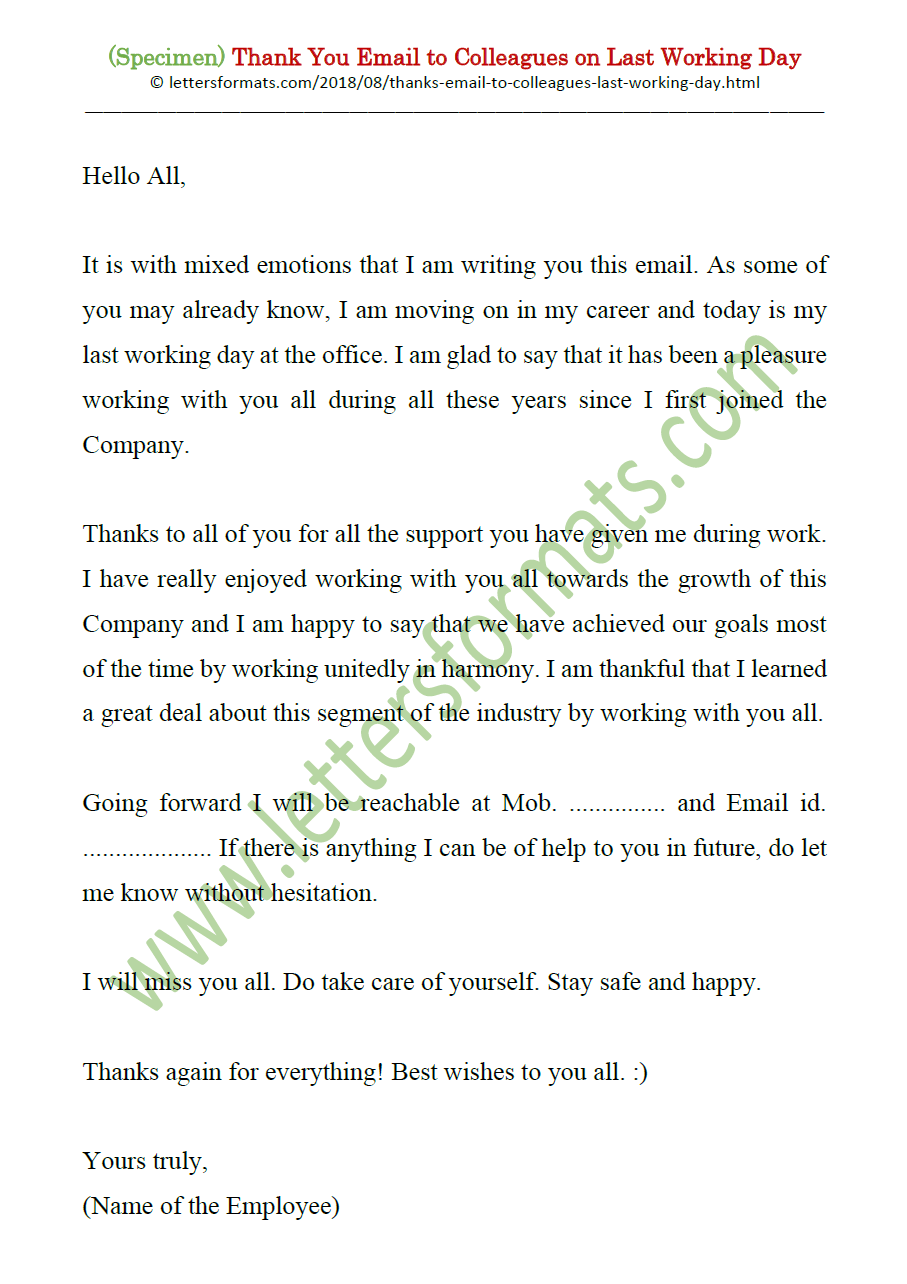Saying Goodbye With Style: Crafting The Perfect Last Working Day Message To Employees
Ever received a farewell email from a departing colleague that felt impersonal or, worse, nonexistent? It can leave a weird feeling, right? Now flip the script: You're about to move on to a new adventure, and you want to leave your team with a goodbye that's genuine, appreciative, and maybe even a little bit fun.
That's where the art of the last working day message comes in. It's more than just an email; it's your final opportunity to express gratitude, celebrate your shared experiences, and leave a lasting positive mark on the people you've worked with.
While it might seem like a simple email, there are actually a few things to consider. What tone is appropriate for your workplace culture? How do you strike the right balance between professional and personal? And how do you make sure your message resonates with everyone, from close colleagues to those you've only interacted with briefly?
Don't worry, we've got you covered. This isn't about following a rigid template; it's about understanding the key elements of a great farewell message and making it your own. Whether you've been at a company for two years or ten, whether you're moving on to your dream job or simply a new chapter, crafting the right message can help you exit gracefully and maintain those valuable professional relationships.
So, how do you say goodbye without sounding cliché or robotic? Let's dive into some tips and tricks to help you write a last working day message that's memorable for all the right reasons.
Advantages and Disadvantages of Sending a Last Working Day Message
While sending a farewell message is generally seen as a positive gesture, it's good to be aware of both the upsides and potential downsides:
| Advantages | Disadvantages |
|---|---|
| Strengthens relationships and leaves a good final impression. | Could be perceived as insincere or obligatory if not done well. |
| Provides closure for both you and your colleagues. | May create an influx of replies to manage. |
| Opportunity to express gratitude and share well wishes. | Risk of sharing overly personal or inappropriate information. |
Best Practices for a Memorable Farewell Message
Ready to start writing? Keep these tips in mind:
- Keep it concise and positive: People are busy! Aim for a message that's easy to read and focuses on the good times.
- Express gratitude: Thank your colleagues for their support, collaboration, and any specific positive experiences.
- Share (appropriate) future plans: If you're comfortable, let people know where you're headed next professionally.
- Offer to stay connected: Share your personal email address or LinkedIn profile for future networking.
- Proofread carefully! Grammar and spelling still matter, even in a casual farewell.
Common Questions About Last Working Day Messages
Let's tackle some frequently asked questions:
- Q: Should I send individual emails or a group message?
- Q: How do I address a large team?
- Q: What if I didn't like my job?
- Q: Is it okay to share contact info?
- Q: When is the best time to send the message?
- Q: Can I include a personal touch?
- Q: What if I'm leaving on bad terms?
- Q: Is it obligatory to send a message?
A: It depends on your relationships and company size. Individual emails are more personal for close colleagues. A group message works well for general well wishes.
A: A simple "Dear Team" or "Hello Everyone" works well for group messages.
A: Even if you weren't thrilled, focus on the positive. Thank colleagues for the experience and any skills you gained.
A: Absolutely! It's a good way to stay in touch for future opportunities.
A: On or just before your last day is ideal, allowing colleagues time to see it.
A: Yes! Sharing a brief anecdote or inside joke can make your message more memorable.
A: It's best to keep it brief and professional, focusing on thanking colleagues for their time.
A: No, but it's a kind gesture that can help you leave on a positive note.
Tips and Tricks for a Standout Message
Want to make yours extra special? Try these ideas:
- Share a funny or memorable work-appropriate story.
- Include a team photo or a picture of a positive work event.
- If you're comfortable, share a piece of advice or learning you're taking with you.
Writing a last working day message is an opportunity to leave a positive final impression. By expressing gratitude, sharing well wishes, and keeping things concise and professional, you can craft a message that leaves your colleagues with warm feelings and maintains those valuable professional connections, even as you move on to new horizons.
Exploring the brazilian flag a deep dive into bandeira do brasil png images
Escape high interest are wells fargo balance transfer offers 0 right for you
The enduring appeal of cartoon dads














